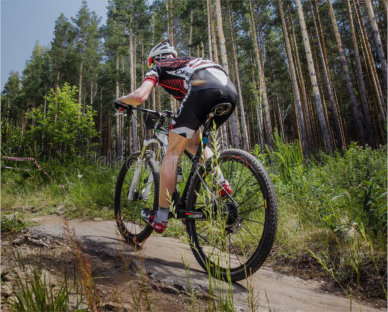 Q The other day I was waiting at the level crossing when another cyclist drew up beside me, panting a bit. He said that he had just ridden up the Billy Trail and got his heart rate into the red.
Q The other day I was waiting at the level crossing when another cyclist drew up beside me, panting a bit. He said that he had just ridden up the Billy Trail and got his heart rate into the red.
What does that mean, and is it good?
A I'm not a medical specialist, nor a sports trainer but it is generally reckoned that it is good, occasionally, to stress all our muscles including the heart.
Just sitting in a chair lets our muscles waste away, and if our heart (which is a muscle) wastes away we're in trouble.
So, we climb stairs to stress our leg muscles, and keep them fit. Of course if we're cyclists we ride our bikes to keep the leg muscles fit, and we must over-work our hearts occasionally to make them fitter.
We often see joggers with big black wristbands which display heart rate and count the steps etc. At the end of their run they are usually sweating slightly and panting a bit because they have been working their lungs as well as their hearts. Their device will probably show the average heart rate and if they have been working hard the display may show they have gone into the red.
Red is normally a danger signal, and if it is continued for too long it probably is, but working any muscle just a bit beyond normal trains it to be stronger and fitter for the future.
In the normal course of riding a bike we don't normally have to work that hard except when riding up a hill (which I do) or pedalling very fast (which I don't).
So, while normal riding is good for keeping joints mobile and moderate exercise to keep reasonably fit, if you want to get really fit or are in training for an event, then you will need to find some tough hills or somewhere you can ride hard and fast.
That somewhere should not be in a crowded public place.
If you want to ride fast you must be very much aware of other people. On the Billy Trail there are walkers out admiring the views, dog walkers exercising their dogs and themselves, and of course joggers.
For various reasons anyone can be distracted or even just quietly thinking their own thoughts so they may not be expecting a cyclist to be bearing down on them especially if the cyclist is concentrating on navigating a possibly uneven surface and riding energetically.
So if we are riding hard on shared tracks we must be especially careful to be aware of fellow users. Remember, when we are on the road we are the vulnerable ones compared to cars and lorries, but on shared paths it's the children, pedestrians, dogs etc. that are more vulnerable, so avoid getting distracted.
If you're getting your heart into the red, have a heart for other people as well.